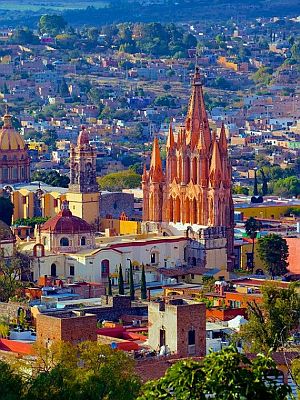Mexico City - The percentage of international airline passengers arriving at airports in Mexico's seven most popular tourist destinations is growing despite government efforts to diversify the tourism sector, statistics show.
Tourism Secretariat (Sectur) data reveals that foreign passenger arrivals in Cancún, Mexico City, Puerto Vallarta, Los Cabos, Monterrey, Guadalajara and Cozumel accounted for 92.1% of all international arrivals by air in January, the highest proportion for the same month in the past three years.
In January 2017, international passenger arrivals at the same destinations represented 91% of all air arrivals, while a year earlier they made up 88.9% of the total.
In an interview with the newspaper Milenio, Mexican Hotel and Motel Association (AMHM) president Rafael García said that the federal government's biggest mistake has been its failure to sufficiently promote adventure, religious and medical tourism to less visited parts of the country.
 |
The AMHM president also said that more direct international flights to regional destinations such as Guanajuato, Morelos, Puebla and Chiapas are needed to further diversify international tourism along with greater direct promotion of the country's inland attractions.
"We have to go after them [potential tourists] in the United States, Canada and Central America," García said.
The Mexican Federation of Tourism Associations (Fematur) agreed that the government's promotional efforts have primarily focused on the country's main tourism destinations - beach resorts - and said that authorities need to place greater emphasis on other regions.
Like García, it also recognized there is a lack of airlines that fly internationally to the country's regional destinations, adding that connecting flights from the country's main airports are expensive.
Although the presence of international tourists across Mexico is not as evenly distributed as some would like it to be, international tourism continues to grow and remains one of the country's most important industries.
Federal Tourism Secretary Enrique de la Madrid announced in Feb. that a record 39.3 million foreign visitors came to Mexico last year, an increase of 4.2 million or 12% compared to 2016 arrivals.
While in the country last year, international visitors spent just over US $21.3 billion, de la Madrid said, adding that the annual number of international tourists could reach 50 million by 2021.
According to Sectur, 52% of all international airline passengers entering Mexico are from the United States, making it by far the biggest source of foreign visitors.
Canada is next with 21% followed by Argentina (3.7%) and Brazil (2.4%).
Original article, published by Milenio, translated and edited by Mexico News Daily.


